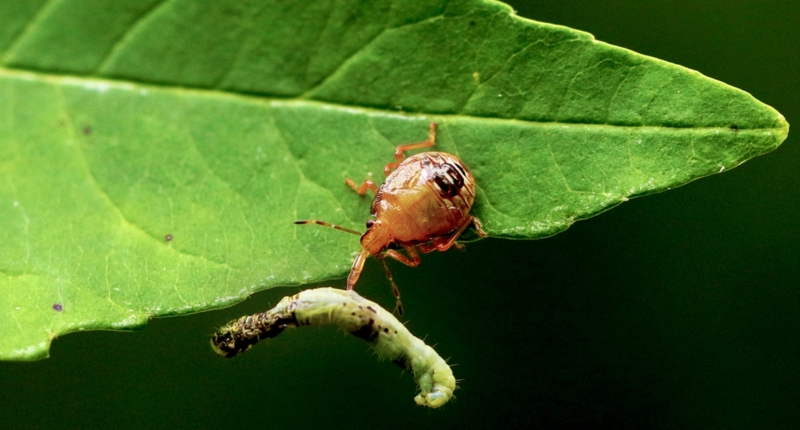Increasing levels of artificial light pollution are posing a threat to the survival of lepidopterans, which are already facing multiple challenges, such as habitat loss, chemical pollutants, climate change, and invasive species. A recent study found that even moderate levels of artificial light can make baby butterflies, specifically caterpillars, more susceptible to predators. The study demonstrated that top-down pressure, or the possibility of being eaten by predators, increased when arthropods were attracted to artificial light. The use of smart lighting control, the placement of lights close to the ground and shielding them, and using the lowest intensity lighting possible are some ways to reduce light pollution. Taking these measures can make a significant difference in saving the lives of vulnerable nocturnal creatures.
Save Caterpillars by Turning Off Outdoor Lights
Artificial light at night can be harmful to a number of animals, including sea turtle hatchlings, birds, and even caterpillars. According to a recent study published in the journal Proceedings of the Royal Society B: Biological Sciences, even moderate levels of artificial light can make baby butterflies more susceptible to predators, reducing their chances of growing up into moths.
Scientists from Cornell University conducted an experiment to test this light theory. They placed 552 lifelike caterpillar replicas made of soft clay in a forest in New Hampshire, gluing them to leaves to look as real as possible. The models were made from green clay that mimics the color and size of two moth caterpillars: Noctuidae (owlet moths) and Notodontidae (prominent moths). Predators like birds, other insects, and arthropods can leave marks on the soft clay if they try to take a bite of the fake caterpillars.
Some of the models were placed on experimental lots that had 10 to 15 lux LED lighting, or roughly the brightness of a streetlight. The lights stayed on at night for about seven weeks in June and July 2021. Of the 552 caterpillars deployed, 521 models were recovered. Almost half (249 fake caterpillars) showed predatory marks from arthropods during the summer-long nighttime study. Additionally, the rate of caterpillar predation was 27 percent higher on the experimental plots compared with the control areas that didn’t have the LED lighting.
This study emphasizes the need to turn off outdoor lights to protect caterpillars and other nocturnal animals. Even moderate amounts of artificial light can attract more caterpillar predators and reduce the chance that their larvae grow up into moths. Moths, butterflies, and skippers are part of the order lepidoptera, and their larvae serve as food for larger prey like birds, wasps, and some small amphibians.
In conclusion, it is crucial to be mindful of the effects of artificial light on insect larvae like caterpillars. Turning off outdoor lights can make a big difference in saving the lives of these vulnerable creatures.
The Ecological Problem of Artificial Light Pollution for Lepidopterans
Increasing artificial light pollution in the night sky is a significant ecological problem for lepidopterans, which are already threatened by habitat loss, chemical pollutants, climate change, and invasive species. A study published in the journal Proceedings of the Royal Society B: Biological Sciences found that even moderate levels of artificial light can attract more caterpillar predators and reduce the chance that their larvae grow up into moths.
This is particularly concerning for caterpillars in the larval stage who are eating leaves to ensure their development. Top-down pressure, or the possibility of being eaten by predators, can increase when arthropods are attracted to artificial light. The study suggests simple ways to reduce light pollution, such as using smart lighting control to remotely manage outdoor lighting, placing lights close to the ground and shielding them, and using the lowest intensity lighting possible.
Don’t miss interesting posts on Famousbio
